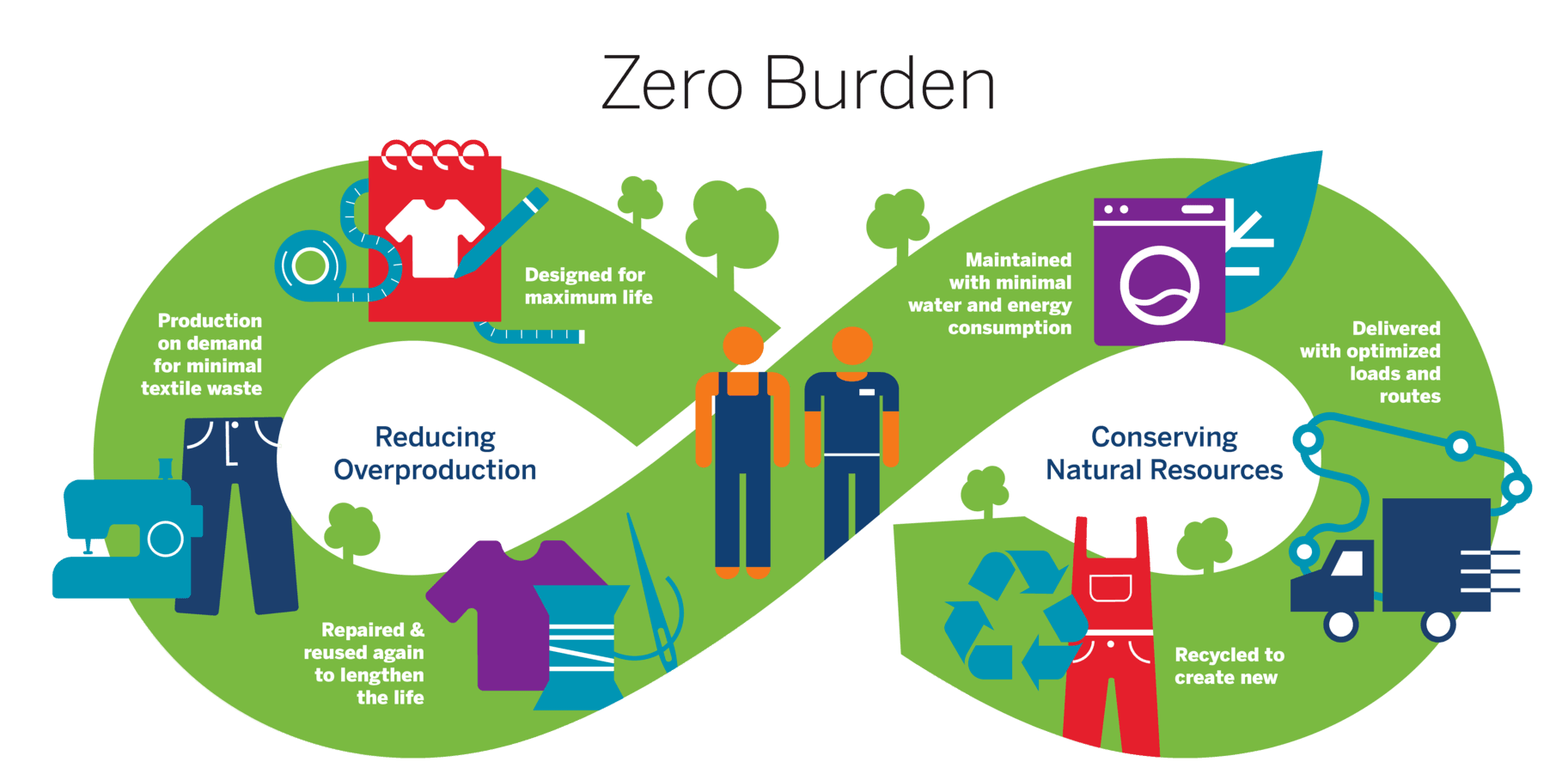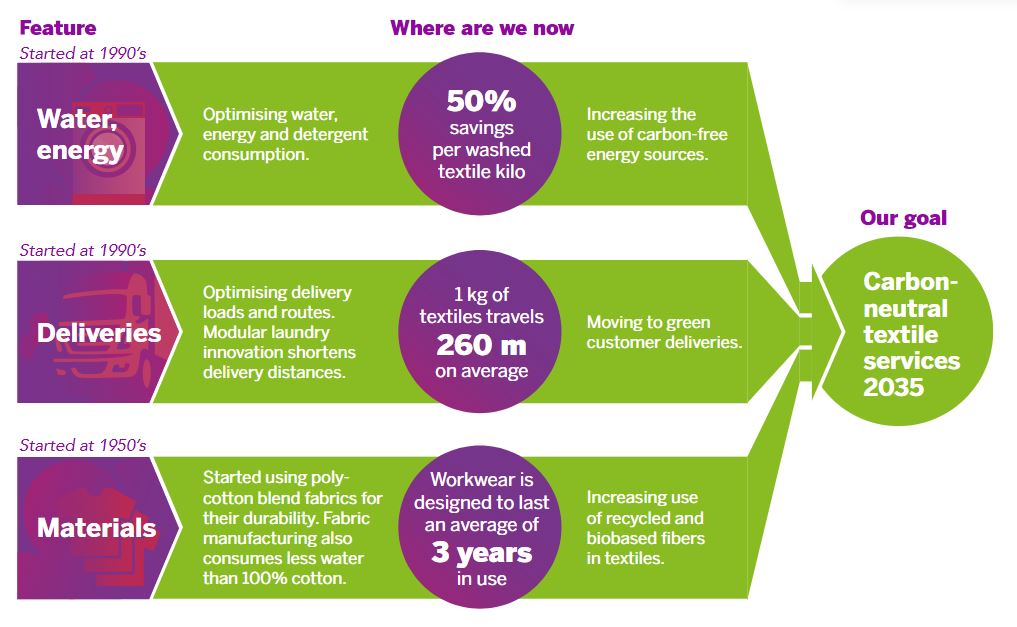Circular business model builds the foundation
As our business model is based on circular economy, it is also our business interest to optimise the use of natural resources and avoid overproduction. While making efforts to take care of the environment with our resource-wise services, we are also improving our cost-efficiency.
To reduce overproduction we extend the lifetime of textiles and minimise the textiles in our stocks and customer inventories. By using durable materials and designing for circularity, we promote sustainable practices at the very beginning. Furthermore, by repairing and reusing our garments, we avoid millions of kilos of unnecessary textile production. We manufacture additional orders on demand in our own workwear manufacturing facilities, Prodems, which helps to eliminate the textile obsolete risk in our stocks. With the help of digital services, we can optimise the textiles needed by our customers.
To conserve natural resources, we optimise the use of water and energy in our laundries as well as our customer delivery loads and routes. Lower washing temperatures, shorter process times, and efficient energy use have improved energy-efficiency in our laundries in the past years. In the washing process, we utilise heat from wastewater to warm fresh water. And when textiles reach end of their life, we recycle them as new products, as raw material for different industries, or as fibers back to textile industry.

Our journey to carbon neutrality has started
During the past decades, we have taken strategic steps towards efficient use of resources so that textiles are designed and maintained with minimal burden to the environment. For example, during the past 30 years we have managed to halve the consumption of water and energy in our laundries per washed textile kilo. In the past few years, we have eliminated buffers in stocks through our own on-demand workwear manufacturing facilities Prodems. By investing in digital solutions, we can optimise the number of textiles needed by our customers. With these measures, we have managed to reduce our greenhouse gas emissions by 30% per washed textile kilo since 2004. During the next fifteen years we have decided to take an even bigger leap and reach net-zero carbon emissions on all the scopes.
